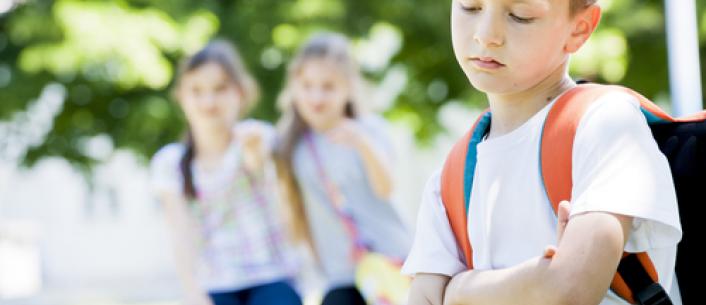- Home
- Play & Learn Home
- Online Enrichment
- Experience Modern Israel
- Israel It's Complicated
- Jewish and Me
- Jewish Holidays Jewish Values
- Jewish Values in Genesis and Jewish Values in Exodus
- Min Ha’aretz
- Our Place in the Universe
- Simply Seder
- The Prophets: Speaking Out for Justice
- Making T'filah Meaningful
- Make, Create, Celebrate
- Yom Haatzmaut Resources
- Hebrew Apps
- About The OLC
- What is the OLC?
- Introduction
- Get Started
- Resources
- OLC Content
- Parent Materials
- See My OLC Classes
- Store
The Public Health Problem of Bullying
Written by Behrman House Staff, 16 of July, 2013
Bullying is more than a childhood trauma; it is prevalent, harmful, and a significant public health problem. According to a recent article in the Journal of Adolescent Health, between 20% and 50% of young people are involved in bullying annually. That’s 4 to 10 students in a class of 20. Students who are bullied themselves are more likely to be depressed or anxious, achieve less academically, have a harder time making friends, and report more loneliness. And there is significant harm to those who bully as well. Frighteningly, there is a strong association between bullying behaviors and suicide related behaviors.
What is bullying? Bullying is not teasing or rough housing that's gotten out of hand, or even a fight. Bullying typically involves an unfair use of power with an intent to do harm, and is repeated despite requests to stop. In verbal bullying, words are the weapons, and can include name calling, spreading rumors, and threatening or making fun of someone. Social bullying uses relationships as a weapon. It can involve excluding someone to make them feel unwanted, an attack on another’s reputation, or gaining another’s trust and then breaking it. Social bullying often happens between so-called friends. Cyber bullying uses technology as a weapon to bully verbally or socially. Finally, physical bullying, which can include shoving, hitting, stealing or destruction of property, is typically an escalation of other types of bullying.
Who gets involved? In any bullying situation there is an aggressor—the bully—who is trying to control or hurt another, and the person being bullied. Yet there is often a third party involved in bullying situations: the bystander, someone (or maybe even several people) perhaps not directly involved, but certainly aware of what is happening. Bystanders can be either part of the bullying problem or part of the solution.
Who is at risk? All involved with bullying are at risk, regardless of role. And often bullies are themselves victims of bullying. Middle school children are more likely to be involved in bullying than high school students, and surprisingly, most bullying takes place in person, rather than online. Homosexual youth are more likely to be victims of bullying that heterosexual students.
Is bullying going on at my school? Sometimes the best thing we can do is ask and listen. You can adapt confidential surveys like this one from Respect2all.org to take a step in assessing the prevalence of bullying among your students.
What helps? Strong social relationships, access to supportive adults, supportive home and school environments that help young people feel connected. Students who describe their school climate as trusting, fair, and pleasant are less involved in bullying. And, while it is of course important to provide intervention for students involved in bullying, it is equally important to establish educational strategies to prevent bullying from occurring in the first place.
What does this have to do with Jewish education? Social and emotional learning (SEL) is a growing watch-phrase for educators involved in developing programs for students that reach beyond the academic and into the lives they live every day. Jewish communities are uniquely positioned to marry SEL to ethics conversations supported by our tradition. Our Jewish communal space is an especially appropriate place to engage in conversations about sensitive topics such as bullying and for our students to learn what Judaism has to say about individual dignity, communal mores, and about menschlekeit behavior. Finally, if we are building trust-based relationships with our students, our Jewish communal space is also a place for our children to find additional caring adults whom they can approach in times of need or distress.



